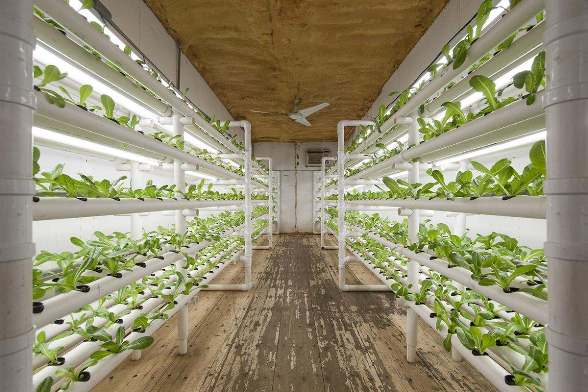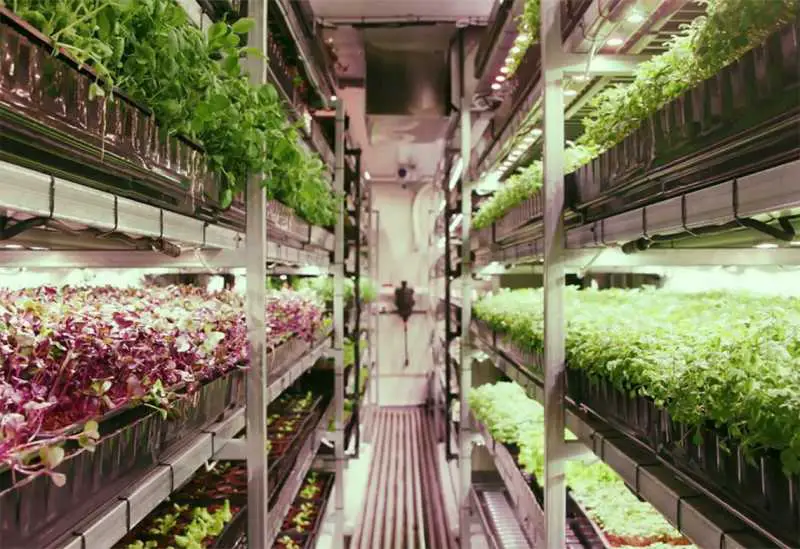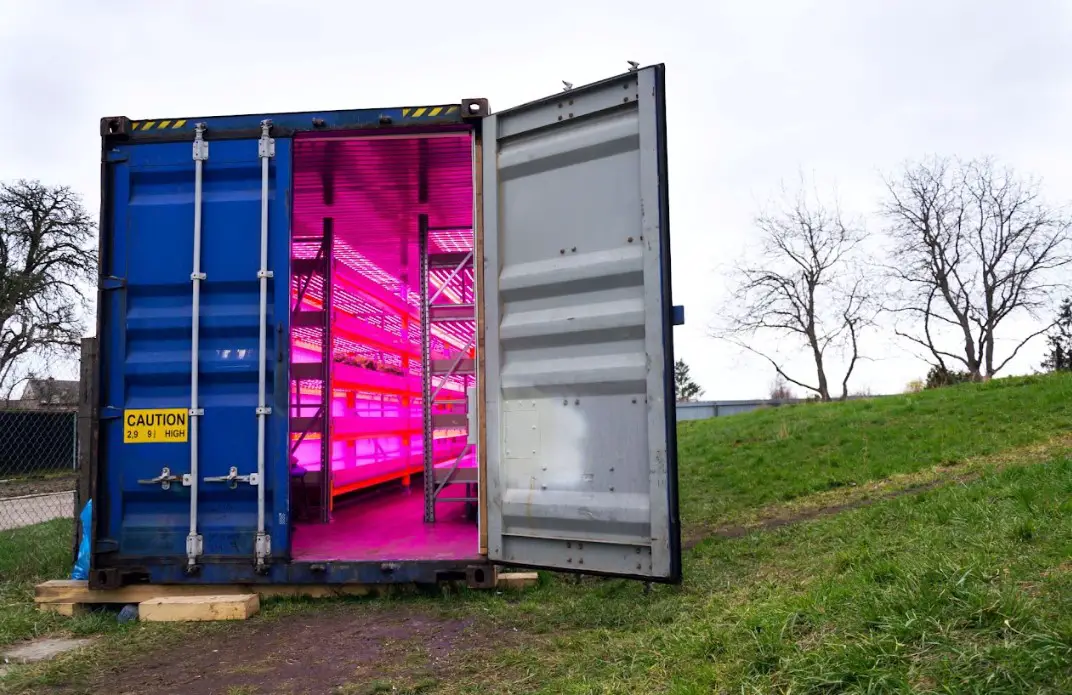In today’s fast-paced world, people continually seek innovative ways to connect with nature and cultivate self-reliance. One such method is creating a home garden, where you can enjoy the benefits of having homegrown vegetables and herbs in your backyard. However, the lack of space often hinders these goals, especially if you’re located in an urban area.
Using shipping containers as greenhouses is a cost-effective, sustainable, and versatile alternative to traditional greenhouses. These provide innovative garden solutions, especially for tight spaces, making them popular among modern gardeners and urban farmers.
Benefits Of Shipping Container Greenhouses

Using shipping containers as greenhouses provides an innovative approach to home gardening. Trusted shipping container suppliers like Royal Wolf NZ specifically modify containers to serve this specific purpose.
Utilizing shipping containers as greenhouses offers various benefits that make them an appealing choice for both novice and seasoned gardeners:
- Durability and Weather Resistance: Shipping containers are built to withstand extreme weather conditions, making them more durable than traditional greenhouses. They can endure strong winds, heavy snowfall, and harsh sunlight, keeping your plants and crops safe from external factors.
- Year-Round Gardening: One of the major benefits of a shipping container greenhouse is its ability to regulate the interior environment. With proper insulation and temperature control, it allows you to grow various plants year-round despite the weather conditions.
- Space Efficiency: A shipping container offers a compact and efficient growing space. You can maximize the area and increase your overall yield by using vertical gardening techniques, such as shelving and hanging planters.
- Ease of Modification: The structural simplicity of shipping containers makes them relatively easy to modify. With some simple adjustments, such as installing windows and doors and setting up ventilation and climate control systems, you can transform a standard shipping container into a functional greenhouse.
- Portability: One of the unique benefits of a shipping container greenhouse is its portability. If you ever need to move, you can take your greenhouse. Similarly, if your gardening needs change, you can relocate the greenhouse within your property relatively easily.
- Eco-Friendly: Repurposing a shipping container into a greenhouse is a sustainable and eco-friendly option for gardening. It gives a new life to a used container and reduces the need for construction materials that would otherwise be required to build a traditional greenhouse.
- Affordability: You can purchase and modify a used shipping container at a reasonable price. It can be a more cost-effective solution compared to the cost of building a traditional greenhouse from scratch.
- Security: Due to their robust construction, shipping container greenhouses offer a higher level of security against pests and potential theft. The steel walls and lockable doors make it difficult for pests to infiltrate and for anyone to gain unauthorized access.
Each of these benefits adds to the appeal of shipping container greenhouses. They make a viable and beneficial option for those looking to delve into home gardening or maximize their homestead.
Transforming A Shipping Container Into A Greenhouse

With your shipping container in place, it’s time to start the transformation process. This stage involves making certain modifications to your container to make it suitable for growing plants.
While each transformation process will be unique depending on your needs, these steps can guide the journey of converting a shipping container into a functional greenhouse:
- Selecting the Right Container: The first step involves choosing a suitable container. You want to ensure it’s in good condition, free from extensive rust or damage. It’s crucial to remember that size also matters – a 20-foot container might be enough for a small home garden, while a 40-foot container could cater to more extensive gardening needs.
- Positioning the Container: Once you have your container, decide where you’ll place it. The area should receive sufficient sunlight, ideally with the long side of the container facing south. You also want to make sure that it’s easily accessible and close to a water source and electrical supply for convenience.
- Creating Openings: For sunlight to reach your plants, you’ll need to create openings in your container. Typically, this involves cutting out sections of the container’s sides or roof and replacing them with transparent material like glass or polycarbonate panels. It’s crucial to involve a professional in this step, as improper cutting can compromise the structural integrity of the container.
- Installing Insulation: Depending on your local climate, you might need to insulate the container to help control the interior temperature. Using spray foam insulation on the container’s interior can be a practical choice, as it covers all gaps and provides excellent thermal insulation.
- Setting Up Ventilation and Climate Control: Ventilation is crucial for maintaining air circulation, controlling humidity, and cooling the greenhouse. You might want to install exhaust fans and vents. Furthermore, setting up a heating system will be necessary for colder climates, while an evaporative cooler might be required in hotter regions.
- Organizing the Interior Space: Now it’s time to plan your growing area. Install shelves, racks, or vertical gardening systems to maximize your growing space. Ensure there’s enough room to move around comfortably for maintenance and harvesting.
- Setting Up Irrigation and Lighting: Depending on what you’re growing, you may need to install an irrigation system and additional lighting. Drip irrigation systems work well in such settings. As for lighting, LED grow lights are an efficient choice.
By following these steps, you can transform a basic shipping container into a highly productive, sustainable greenhouse.
Maintaining Your Shipping Container Greenhouse
After establishing your greenhouse, regular maintenance is vital to keep it functioning at its best. Here are some key steps to maintaining your shipping container greenhouse:
- Checking for Rust and Damage: Inspect your container regularly for any signs of rust or structural damage. If you spot rust, you can typically treat it by scrubbing it off and applying rust-proof paint.
- Monitoring Temperature and Humidity: The internal environment of your greenhouse is vital for plant growth. Adjust your climate control systems as needed to ensure your plants remain in optimal growing conditions.
- Cleaning the Greenhouse: Regular cleaning helps maintain a healthy environment for your plants. Remove plant debris, clean the floors, and wash the windows to ensure maximum sunlight penetration.
- Inspecting the Irrigation and Lighting Systems: Make sure your irrigation and lighting systems are functioning correctly. Check for leaks or clogs in the irrigation system and ensure your lights are working efficiently. Regular inspection and prompt repairs can prevent any plant growth disruptions.
- Looking Out for Pests: Despite the robust construction of a shipping container, pests can sometimes find their way in. Regularly inspect your plants for pests or diseases. If you detect an issue, identify the cause and treat it promptly to prevent it from spreading.
These maintenance steps can help keep your greenhouse in top shape and ensure the health and productivity of your plants.
Conclusion
Using shipping containers as greenhouses is a sustainable and efficient home gardening innovation. Whether you’re an experienced gardener or a budding green thumb, this modern solution could be the perfect way to achieve your home gardening aspirations. This is an opportunity to grow your own food, reduce your carbon footprint, and contribute to a greener planet, all from the comfort of your backyard.



